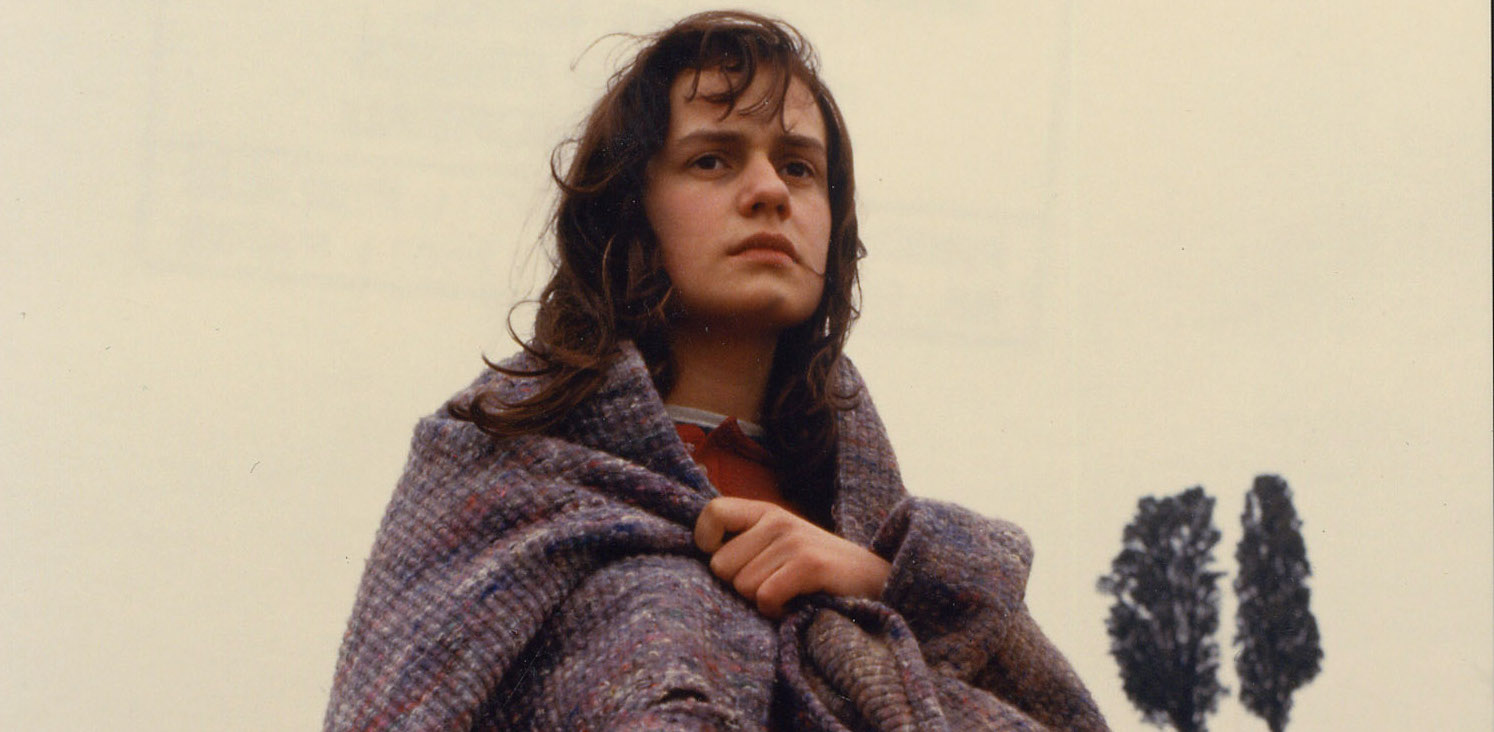Je m’en fous, je bouge.
Mona from Agnès Varda’s Sans toit ni loi (1985) is a puzzling figure. From one angle, she appears to be both aimless and selfish, taking excessively from others while offering nothing in return; from another, she is a feminist hero whose hardcore lifestyle pays homage to Chris McCandless. Indeed, when we first encounter her in the middle of her journey, Mona’s autonomy is astonishing. Not only does she travel across the French countryside solo, she does so in the middle of the winter, often pounding nails into the hardened earth to set up her tent. Contributing to our perplexing perception of Mona is her lack of interest in forging bonds or allegiances: when the lover who supplies her with weed becomes injured, she leaves him immediately. She is comfortable with expressing disdain towards people’s passions (the cratemaker’s trees, Mme. Landier’s biological research), and she leaves behind a string of heartbroken lovers who always seem to be left wanting more. Our impressions of Mona are shaped largely by the testimonies of her acquaintances, a motley group that includes a heartsick housekeeper, a philosopher-goatherd, a biologist, and a Tunisian vineyard keeper. As Varda recounts, “I decided that the people she’d met would be the ones who spoke of her. She’d be practically silent herself”.
Sans toit ni loi paints a portrait of a woman who treats her body solely as a vehicle of transport and of pleasure: not only does Mona engage in the physically taxing (and typically masculine) tasks of hitchhiking, vine cutting, and car-washing, she also smokes cigarettes, does drugs, and has sex with whomever she pleases. Mona’s outfit, consisting of a black leather jacket, sturdy boots, and grey pants, is much like a military uniform in that it exists to protect her. Only her bag stands out: imprinted with an M that resembles the logo of a college in the US, it could stand for “Mona” or “Moi”. The M almost seems to be drawing attention to the fact that there is no difference between the two: “Mona”, after all, is the name she christened herself, and Mona always seems to prioritize her desires and itinerant lifestyle over all else. However, as the film progresses, Mona’s motivations only grow more ambiguous, leading me to pose the question: what exactly does Mona desire?
One could argue that Mona always wanted what she couldn’t have; her lifestyle, after all, is one that ultimately proved unsustainable. The shot of her with the statue at the chateau represents this reality: though it only lasts for a few seconds, the visual of Mona staring into the statue’s eyes as she caresses her chest is poignant. She expresses sentimentality for an object that cannot live nor reciprocate her affections. Her gestures seem to mirror how she desires a life that does not exist—or at least, cannot sustain itself. Much like the statue, the life she craves is not real or viable.
One could also take the point of view that Mona desires true rebellion against a society that is embodied by the character of the nephew: unremarkable and judgmental, his chief preoccupation is waiting for his aunt to die so he can receive her inheritance. Indeed, the juxtaposition of Mona and the nephew’s lives is highlighted in the shot of the two of them in the train station: the nephew, planted in the foreground, is safely enclosed in the phone booth, firmly anchored to civil society through the phone line as he criticizes Mona’s disgraceful conduct. Meanwhile, Mona staggers around in the background: she is out of focus, but we can clearly see her vomiting and making a mess of herself. This shot, among others, presents Mona as a vagrant and a rebel, the pure antithesis to someone like the nephew—and yet, Mona does not overtly reject civilization. Rather than living in true autonomy in the wild, Mona chooses to remain on margins of society and rely on the kindness of strangers. She flirts with society as opposed to abandoning it completely; though she may stray away, she always returns. As her interaction with the goatherd reveals, Mona prefers to dream about living a life within civilization rather than committing to making that dream a reality. When the goatherd gives her a plot of land after she expresses her desire to settle down, her response is to complain that she “didn’t quit to find another boss on the road.” Similarly, when the vineyard worker reneges on his promise to give her a home and a steady job, Mona acts upset, even though her behavior during their last days together had already begun to resemble her lazy ways on the goatherd’s farm. Mona knows what she doesn’t want (to settle down or commit), but she doesn’t necessarily know what she wants, either.
Ultimately, Mona dies a death that is painful to watch: cold and hungry in a ditch, convulsing in pain. To suggest that Mona’s errancy is wrong, however, would be misinterpreting the film, as Varda herself suggests in an interview with Film Quarterly. Mona dies, but her defeat is purely physical. Her reliance on others for physical sustenance eventually became her downfall, but at no point during the narrative does Mona seek validation or emotional support from others—not even in her death. She dies alone, but in doing so she dies independently. The film prompts us to ask: is there no value to a life of pursuing what you want, even when you do not always know what that is?


